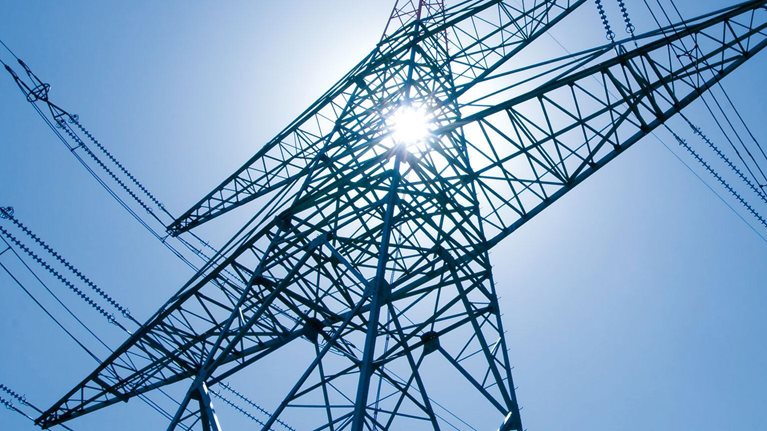Electric utilities face regulatory and public pressure to achieve two opposing goals: making overdue upgrades while holding down costs and rates to customers. Following an investment wave during the 1970s and 1980s, transmission and distribution (T&D) companies put far less money into improving their networks over the next few decades. Now those networks are nearly obsolete and need enhancements to improve grid availability and security and to bring renewable energy, distributed generation, and other advanced technologies online. And as T&D companies look at whether to make certain upgrades, they may be without essential technical knowledge because many of their experienced workers are retiring.
At the same time, T&D companies must contend with financial constraints and regulatory requirements. In response, many have cut costs by streamlining their processes and outsourcing support activities such as construction. Transmission companies are using new technologies, especially devices for remotely monitoring and controlling equipment, to make their operations more efficient. Distribution companies are beginning to do the same.
As the costs of remote-monitoring gear and analytical software continue to fall, we see promising opportunities for T&D companies to make their asset-management programs more productive. Advanced analytics, using real-time performance data and predictive algorithms, can help T&D firms prevent asset failures, concentrate asset-management efforts on critical assets, avoid excess maintenance work or premature asset replacements, and institutionalize the valuable knowledge of in-house experts. Analytics also allows leaders to gain visibility and control over operational risks and asset-management practices and to use their insights to have more constructive conversations with regulators.
Compared to dealing with equipment failures as they occur or following overly conservative maintenance protocols, our experience suggests that an analytics-powered approach to managing assets can bring down costs, improve customer satisfaction, and increase the reliability of T&D networks. And since asset management can account for 20 to 30 percent of a transmission or distribution company’s operating expenses and 15 to 20 percent of its capital expenditures (excluding capital spending to support growth), the savings opportunities alone can be significant.
In this article, we set out the core elements of using advanced analytics to manage T&D assets: measures of asset health, measures of asset criticality, and an integrated analytical model for devising an asset-management plan for a transmission or distribution network. We also suggest the major considerations that T&D company executives should plan around as they begin to use analytics in asset management.
Would you like to learn more about Utilityx?
Asset management before the age of analytics
Despite efforts by the International Council on Large Electrical Systems, the International Organization for Standardization, and other groups, no standards exist for asset management in the power T&D industry. Without standards, T&D firms have had to create asset-management plans of their own. Typically, companies turn to their engineers and maintenance workers to determine, largely on the basis of their experience, when and how assets should be serviced.
At many T&D companies, asset management has mostly been a matter of maintaining and replacing assets according to fixed schedules that might have been established years earlier. For example, it is common for T&D companies to check the quality of the oil in their power transformers every two to three years, regardless of the actual rate at which oil quality worsens. This sort of routine-based method has endured for several reasons. It is easy to document and report to regulators, simple to implement, and highly predictable, which helps with planning spending and investments.
But managing assets in this way has evident drawbacks. Maintenance programs tend to vary across companies. The lack of standards for asset management and the variety of asset-management plans make it harder for regulators to determine whether T&D companies are doing what they should to ensure that their networks will perform properly.
Even among departments within the same company, there is typically no standard maintenance framework. A unit responsible for overhead power lines might use sophisticated measures of asset criticality and health to decide when maintenance is needed, while auxiliary systems and high-voltage units have no asset-management system at all. When various departments follow different approaches to maintaining their assets, management has much more difficulty comparing their effectiveness and allocating resources efficiently.
Putting engineers and maintenance workers, rather than company executives, in charge of planning asset management has also caused one priority to override others: maximizing the availability of assets. After all, this is what engineers and maintenance workers are rewarded for doing well. Consider the sweep-frequency response analysis (SFRA), a method of checking whether power transformers are structurally sound and properly functioning. In general, workers should do SFRA tests on transformers following events that can damage them, such as episodes of excess current. Yet it is common for workers to perform SFRA tests periodically too.
Such an approach is wasteful. It leads workers to decommission useful assets years before they manifest any problems. It also obliges workers to perform inspections and maintenance procedures even when assets are working well.
Building an analytical approach to asset management
Today, however, T&D companies can manage assets more efficiently thanks to improvements in technology. Sensors, communications devices, and other hardware that allow objects to be tracked and controlled remotely have become increasingly affordable and reliable. So have the analytical tools for processing, interpreting, and responding to data from equipment. These shifts make it possible for T&D companies to retire the old model of relying on specialists to set maintenance schedules based on experience in favor of a flexible, streamlined, and analytically rigorous approach that uses real-time performance data and predictive models to guide asset-management decisions.
Shifting to an asset-management model based on analytics makes it possible to improve productivity in different ways, which companies should prioritize according to local regulations, the quality of their assets, and other factors. Companies that want to lower costs might use analytics to identify routine procedures they can eliminate, particularly for assets that are less valuable, and to keep their assets in service for longer. Other companies might consider it more important to increase the reliability of their services. For these companies, analytics can aid in planning additional maintenance work for assets that can disable their networks if they fail.
In helping T&D companies define more than 100 use cases for analytics, we have identified three essential elements of an asset-management system powered by analytics: measures of asset health, which indicate the probability that assets might fail; measures of asset criticality, which gauge the importance of those assets to clients, employees, regulators, and other people and organizations that rely on them; and an asset-management decision model that combines asset health and criticality measures with executives’ priorities to recommend a comprehensive plan for asset maintenance and replacement across a transmission or distribution network.
Measuring asset health
Preparing a health index for every one of a transmission or distribution company’s assets is one step in using analytics to shape an asset-management program. A health index is a single number that expresses the condition of an asset and thereby indicates whether it requires maintenance or replacement. Health indexes are calculated with formulas that include many variables: the asset’s original specifications, baseline measures of its performance, findings from monitoring tests, records of performance failures, and data on weather conditions to which the asset was exposed, to name a few. Health indexes can be recalculated as frequently as a company’s testing systems allow. An asset fitted with remote sensors can have its health index computed each time the sensor signals a change in the asset’s condition or performance.
Once it compiles the necessary variables, a T&D company can use algorithms to identify assets that are likely to fail (Exhibit 1). Machine-learning algorithms for computing asset-health indexes update when new data come in, and people can check their predictive accuracy against data about assets’ real-world performance. These algorithms can be based on any number of analytical techniques, such as logistic regression, classification trees, neural networks, and random forests.

It’s important to recognize that certain assets require special predictive techniques. For example, power transformers have low probabilities of failure. An individual company would need years to compile meaningful volumes of data about why and when transformers fail. Instead, companies may need to purchase commercial failure databases, which are inexpensive relative to their asset-management budgets, or use simpler engineering models based on academic research (for example, Michel Duval’s pentagon or R.R. Rogers’s algorithm for dissolved-gas analysis in power transformers).
Computing asset criticality
In other industries, the ordinary method of measuring the criticality of an asset—its importance to an overall system—is a failure-mode and effects analysis (FMEA). However, this method is impractical for transmission and distribution systems, which consist of thousands of assets that are continually being tested, serviced, and replaced. With advanced analytics, a company can separately evaluate all the ways in which an asset can fail and thereby calculate an asset’s criticality with more efficiency and precision.
The first component of asset criticality is the probability of failure modes. In a traditional FMEA, experts evaluate all the ways in which an individual asset’s performance can fall below an acceptable level. With analytics, it is possible to model the probability of all the failure modes for a specific type of asset and update the probabilities based on its location and constructive characteristics. Analytics also allows T&D companies to tie asset-health indexes to the probability of various failure modes and update these indexes in real time as assets are examined, tested, fixed, or replaced.
The second component of asset criticality is the impact of an asset’s failure on the transmission or distribution system. Determining this impact involves a network topology analysis, which looks at how the system is configured and the impact of asset failure on all key stakeholders. Such impact includes economic and financial losses, risks to employee health and safety, environmental harm, security lapses, and regulatory sanctions. For each potential type of failure, the effects must be projected, converted into the same units of measure, and tallied up. Analytics streamlines this challenging and time-consuming computational exercise to the point where it takes place automatically.
Constructing asset-management decision models
Asset-health indexes and criticality ratings are needed to identify which assets are in danger of failing and which assets are most important to a transmission or distribution network. Ultimately, though, executives must decide how to allocate money and staff time to maintaining and replacing T&D assets. Analytics can inform those decisions with comprehensive models that let executives easily evaluate and compare options for maintaining assets.
Building asset-management decision models requires determining how willing executives are to bear the various costs that can result from a system failure. One way to do that is to ask executives to identify which outcomes they prefer under different scenarios. An algorithm can then associate their preferences with various options for managing the company’s assets and prioritize those options accordingly. The same algorithm can also update asset-management options as new data come in about the condition and performance of assets or as executives are confronted with choices in real time.
The outputs and capabilities of asset-management decision models include the following:
- a recommended asset-management plan that prioritizes operating and capital expenditures at the corporate level and specifies asset-maintenance protocols for department heads and maintenance workers, down to the level of individual assets
- “what-if” scenario testing, which lets executives consider how the recommended asset-management plan would change if they were to make alternative choices, such as deferring or accelerating maintenance or capital spending
- ratings of the overall health of a company’s asset base, along with defensible projections of how the assets will age, which can be used to articulate capital-spending plans and inform regulators’ incentive programs
Asset-management decision models also play an important part in capturing and conveying knowledge. They allow executives and managers to gather the knowledge of experienced maintenance professionals and incorporate it into asset-management plans. And they help executives explain their asset-management approaches to regulators in terms of the considerations that matter to authorities: capital spending, system reliability, and the cost of electricity, among others.
Applying these techniques can reduce the cost of maintenance by 10 to 40 percent, depending on the asset family, while maintaining network reliability (Exhibit 2). In our experience, such methods can be implemented with a wide range of grid components.

Succeeding with analytics in asset management
Implementing an analytics-powered approach to asset management is no easy task. When we surveyed T&D companies, we found that few start out with the maintenance strategy, data architecture, information systems, organization, processes, and capabilities they would need to carry out such a transformative effort. Most will need to devote substantial time to the effort (several years, in some cases), make investments in new equipment and software, and catalyze organizational change, starting with the C-suite and extending throughout the company (Exhibit 3). That said, companies can expect to realize significant value from the changes they will make in their transition to using analytics in asset management, and sometimes gain benefits within just six months. Our experience suggests that companies create much of that value by putting the following institutional enablers in place.


The digital utility: New opportunities and challenges
- Core principles. T&D executives should determine the most important considerations that they will use to shape their companies’ asset-management programs. These might include network reliability, employee health and safety, environmental impacts, or the cost of electricity. While these principles are no substitute for the detailed preferences that are required to construct an asset-management decision model, they serve as a check on the major strategic and operational choices that executives make.
- Integrated IT systems and well-structured data. Using analytics to support asset management only works if a T&D company can produce high-quality data on its assets. At many T&D companies, however, data quality can vary a lot, and consolidating the right data can be difficult. This is because companies often divide responsibilities for assets among departments that have their own IT systems. Separate IT systems need to be integrated so all the asset data they generate feed into a single warehouse. These data also need to be structured so they can be used seamlessly in asset-health indexes, asset-criticality assessments, and asset-management decision models. External databases can help fill gaps in a company’s own data.
- Asset-monitoring infrastructure. Many T&D assets have plenty of real-time monitoring gear on board. Power transformers, for example, are typically equipped to gauge oil temperature, power through the transformer, refrigeration functioning, and exterior temperature, which makes it possible to identify partial discharges and hot spots. Other assets may need to have monitoring devices installed. Since these devices tend to be expensive, maintenance-intensive pieces of equipment, it is usually practical to add those to the most critical assets first.
- Organizational structures and processes. Analytics-driven asset management requires executives to make decisions and establish guidelines that govern day-to-day maintenance work. Executives also need to monitor maintenance activities with regular updates and occasional audits. Shifting authority for asset management from departments, where it usually resides, and into the C-suite involves open and frequent communication. To avoid redundant effort, departments need to receive explicit instructions and to communicate with one another about their activities. T&D companies may also need to change how they evaluate the performance of employees, and to bring on data scientists, software engineers, and other quantitative professionals who can create and maintain new systems and processes.
- Strategic alignment. An asset-management program that is based on real-world data and advanced analytics should be a valuable part of a T&D company’s strategic-planning process. It provides executives with a much more precise understanding of what they will spend on both assets and maintenance activities over the long term. It also reveals opportunities to cut costs and reallocate funding according to departments’ asset-management needs. Finally, asset-management analytics can inform T&D enterprises’ approaches to managing physical, financial, regulatory, and other risks.
As one of the least standardized disciplines in the T&D business, and an area where executives have long assumed a hands-off posture, asset management is overdue for the introduction of more analytically sound techniques. Technological advances have created the opportunity for executives to bring analytics into their asset-management programs and thereby make these programs less expensive and more effective. Most T&D companies already have some enablers of an analytical approach to asset management. Executives can take charge now to initiate the transition toward world-class asset management that analytics makes possible.


